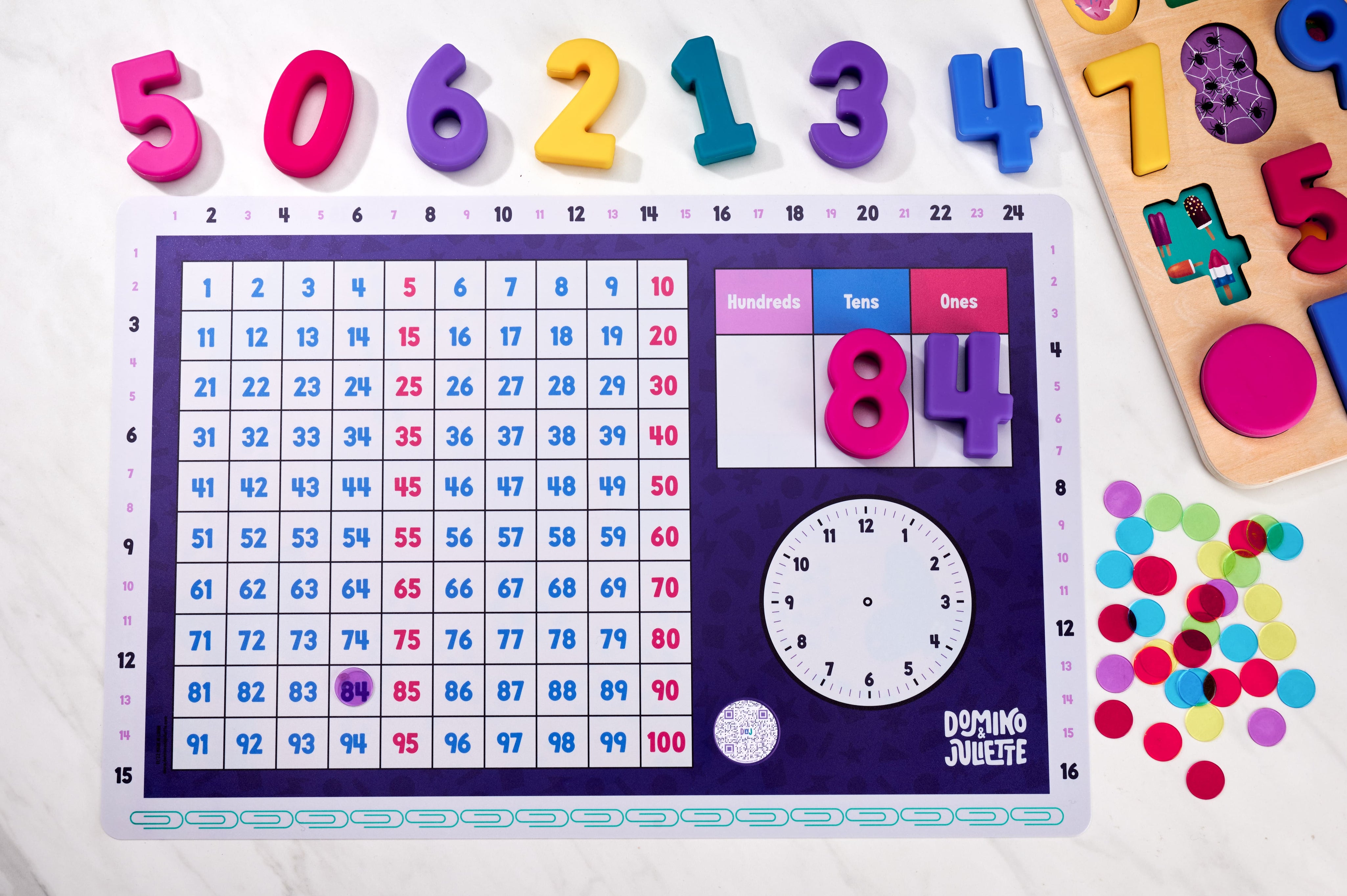Understanding Place Value with Hands-On Tools

Written by Cali @chasing50toes
Place value is one of those things that either clicks—or doesn’t. And when it doesn’t, everything that comes next (adding larger numbers, regrouping, decimals) starts to crumble.
We introduced place value using real, tangible materials and visual models—especially the Math Basics 2 Placemat, which has two ten frames on the yellow side. One of our favorite ways to start? Grab a tray and sort objects into groups of ten. Ten LEGO bricks go in one pile, one single LEGO goes in another. That’s the difference between the tens place and the ones place.
We also use the groups of bugs from the same placemat to make this concept come to life. Ask your child to count the group of 14 ladybugs, then build the number 14 using the 123 Find & Fit Puzzle. From there, use the two ten frames to show 1 full group of ten and 4 leftovers. Suddenly, 14 isn’t just a number—it’s something they can see and build.
On the blue side of the Math Basics 2 Placemat, we explore place value breakdowns all the time. I might say,
“43 is 4 tens and 3 ones.” We show this on the place value chart using the 4 and 3 puzzle pieces, then find 43 on the hundreds chart. If we add one more, what changes? We look at how the ones increase, and then how the tens place updates when we roll over to the next group of ten.
When kids can visualize numbers this way, place value stops being abstract. They understand how tens and ones work together—and that understanding is the foundation for long-term math success.

